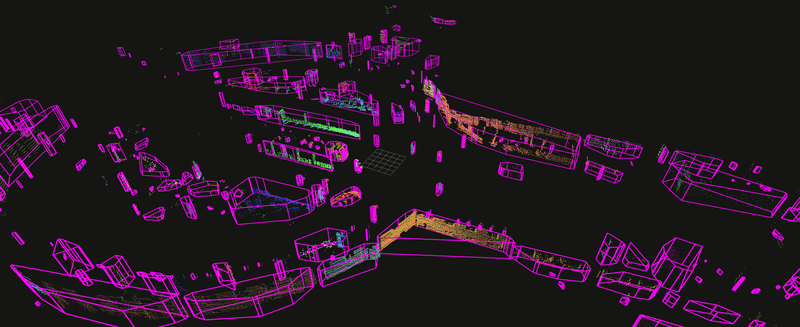POINT CLOUD PROCESSING
How to get started on PointCloud
In this blog, I am going to go over how to start working with PointCloud Data.
To begin with PCL (Point Cloud Library), it’s important to understand some basic data structures and what they represent:
- PointCloud: A set of points in 3D space that represents the surface of an object or scene.
- Voxel: A volume element representing a 3D space, typically used for processing large 3D datasets.

Clustering Algorithms
Clustering algorithms are used to group similar points in a point cloud. Some common algorithms include:
- Hungarian Algorithm: Often used for solving assignment problems, it can help with point matching and clustering.
- Euclidean Clustering: A method for grouping points that are within a specific distance (i.e., Euclidean distance) of each other.

Ground Plane Filtering
Another objective in point cloud processing is to filter out the ground plane and other unnecessary elements. This is crucial for many applications, such as autonomous driving and object detection.
-
The ground plane is typically flat, which suggests that a plane fitting algorithm like RANSAC (Random Sample Consensus) can be used to remove ground plane points.
-
In many point clouds, there are also significant noise points that are far outside the standard data, which can be filtered using RANSAC. It works by randomly selecting a subset of points, fitting a model to this subset, and evaluating how well the model fits the data. This process is repeated to find the best model.
Point Cloud Processing with Deep Learning
There are two main ways to process point clouds using deep learning:
-
Point-Based Processing (Direct Processing): Each point in the cloud is directly processed using neural networks, such as PointNet, which are designed for non-grid data.
-
Voxel-Based Processing (Voxelization + Convolutions): The point cloud is first converted into a voxel grid, and then traditional convolutional neural networks (CNNs) are applied to process the voxelized data.
These methods are essential for applications like 3D object recognition, segmentation, and autonomous navigation.